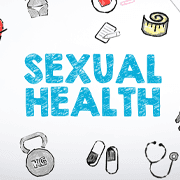Azithromycin For Chlamydia: Use and Effectiveness
In This Article
Azithromycin For Chlamydia: Use and Effectiveness
Parvathy
Updated on March 04, 2024
Medically verified by Dr. Pournami
Fact checked by Dr. Arya

Wellness
10 mints
Are you suffering from Chlamydia, a common sexually transmitted infection (STI), affecting millions globally each year?
If yes, we’re sure you’ve been prescribed Azithromycin to treat your condition.
Before popping the pill, or having the powder, have you ever wondered what it is, how effective it is, and if you’re using it right?
When it comes to treating Chlamydia, one medication often takes center stage: Azithromycin. This antibiotic has become a cornerstone in the fight against the sexually transmitted infection due to its simplicity and effectiveness.
But how does it work to fight Chlamydia? Let's explore why it's a trusted solution in the battle against this common STI. Karepedia is here to help you. Join us as we delve into the basics of this medication.
Chlamydia and Azithromycin
Chlamydia is a sexually transmitted bacterial infection caused by chlamydia trachomatis. Chlamydia is treated with antibiotics.
-
The most common antibiotics used for the treatment of Chlamydia in the throat are Azithromycin or Doxycycline.
-
It is found that more than 95% of the cases can be cured if antibiotics are taken correctly.
How is it Used ?
Azithromycin is a FDA (Food and Drug Administration) approved antibiotic which is used to treat Chlamydia.
-
It cures Chlamydia by stopping the bacteria from multiplying. Doctors recommend taking one dose of 1g , which is followed by 500 mg once a day for 2 days .
-
Azithromycin comes in three forms. Tablet, extended-release (long-acting) powder, regular-release powder. For both powder formulas, mix it with a liquid to take.
-
A study conducted in 1993 found out that a single dose of azithromycin was as safe and effective as a 7-day course of doxycycline in the treatment of genital chlamydial infections.
Who Can Take It ?
Adults and adolescents of 10-19 years of age can take azithromycin to treat genital chlamydia.
However, if one is allergic to Azithromycin, pregnant or breastfeeding, doctors may prescribe antibiotics such as amoxicillin or erythromycin.
When and How To Take It ?
Here’s what you should know.
-
Azithromycin is taken as a single dose,one time. It should be taken as soon as one receives a prescription from the doctor.
-
Azithromycin is taken one time orally and is taken with or without food. However, the extended-release form is typically taken on an empty stomach.
-
If you take the liquid (suspension) form, shake it well before using and use a dosing spoon to measure an accurate dose. It is to be noted that one should take the dosage only as per the prescription by the doctor .
-
It takes approximately 1 week for azithromycin to cure chlamydia. However, it can take up to 2 weeks for the infection to go away completely.
-
It is also to be noted that during the treatment intercourse should be avoided. As this may worsen the infection during the treatment.
-
The Center for Disease Control recommends that after the treatment of initial infection, testing should be done approximately after three months .
 10mint
10mintSexual Health Matters: How To Maintain Your Sexual Health ?
 10mint
10mintYour Guide to Sexual Health Screening and Preventive Measures
 10 mints
10 mintsSTDs in Women: Comprehensive Guide on Symptoms and Treatments
Get a Callback Now
What Are The Potential Side Effects
Some people experience side effects during the treatment. These side effects are usually mild and not too serious. Common side effects include stomach pain , diarrhea, thrush in women and dizziness.
A 2012 study found that azithromycin could increase the risk for cardiovascular death due to arrhythmias, so the FDA released a warning about the risks.
Do not take Azithromycin if you have the following problems
-
Women experiencing lower belly pain , pain during sex , vomiting or fever.
-
Man experiencing pain or swelling in testicles or fever .
-
If you have had an allergic reaction after taking azithromycin or other antibiotics.
-
If you have a serious long-term illness, such as kidney, heart, or liver disease
-
If you are currently taking another prescription medication, including medicine for diabetes.
In this case , consult the pharmacist regarding this .
Sometimes an allergic reaction may occur when taking Azithromycin.
Seek medical attention if you have any of the following symptoms while taking Azithromycin.
- Difficulty in breathing or tightness in the chest
- Closing of the throat.
- Swelling of the lips or tongue.
- Rashes.
- Other less common side effects include :
- Fatigue
- Vaginal itching or discharge
- Irregular heartbeats.
- Hearing problems
- Liver damage
FAQs
1. Can you drink Alcohol while taking azithromycin for chlamydia? Yes , you can drink small amounts of alcohol while taking Azithromycin.
But large amounts may lead to problems such as nausea, diarrhea, vomiting and abdominal pain. There is no proven evidence suggesting the relation between Azithromycin and Alcohol.
2. Is treatment always necessary for chlamydia? Yes, treatment is very necessary for Chlamydia.
This is because, especially in women, untreated Chlamydia may result in pregnancy and fertility issues. Delays in treatment have been associated with complications, such as pelvic inflammatory disease.
3. Can you get chlamydia more than once? Yes, there are chances of getting the infection even if you have successfully completed the treatment once.
A sexual partner who has chlamydia can transmit it to you again, even if you have already had and cured it.
Chances of getting Chlamydia again is high if the treatment is not completed properly. It is necessary to continue the antibiotics for the prescribed period of time even if the symptoms get better.
The CDC recommends getting tested 3 months after treatment of your initial infection to ensure the infection is cleared.
Chlamydia is a sexually transmitted bacterial infection caused by chlamydia trachomatis. Chlamydia is treated with antibiotics.
Azithromycin is a FDA (Food and Drug Administration) approved antibiotic which is used to treat Chlamydia. It cures Chlamydia by stopping the bacteria from multiplying.
Adults and adolescents of 10-19 years of age can take azithromycin to treat genital chlamydia.
Azithromycin is taken as a single dose,one time. It should be taken as soon as one receives a prescription from the doctor.
Azithromycin is taken one time orally and is taken with or without food. However, the extended-release form is typically taken on an empty stomach.
Side effects of azithromycin include difficulty in breathing or tightness in the chest, closing of the throat, swelling of the lips or tongue, and rashes. Other less common side effects include fatigue, vaginal itching or discharge, irregular heartbeats,

